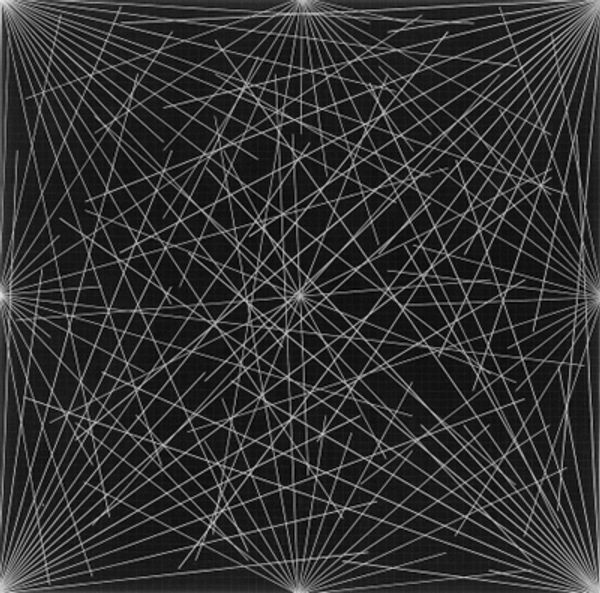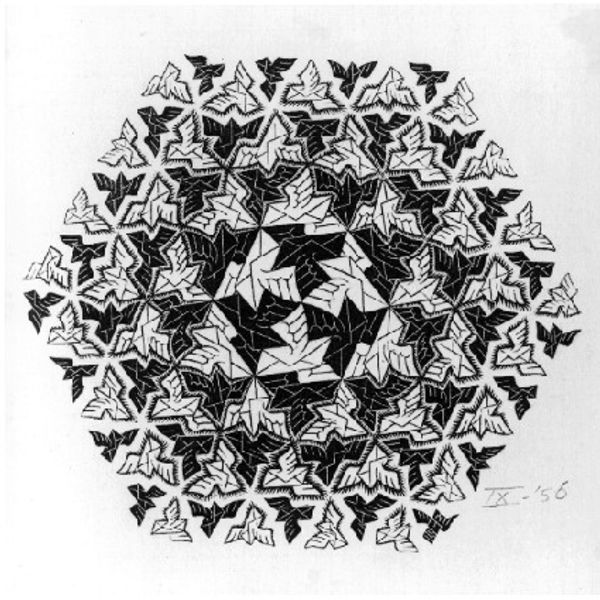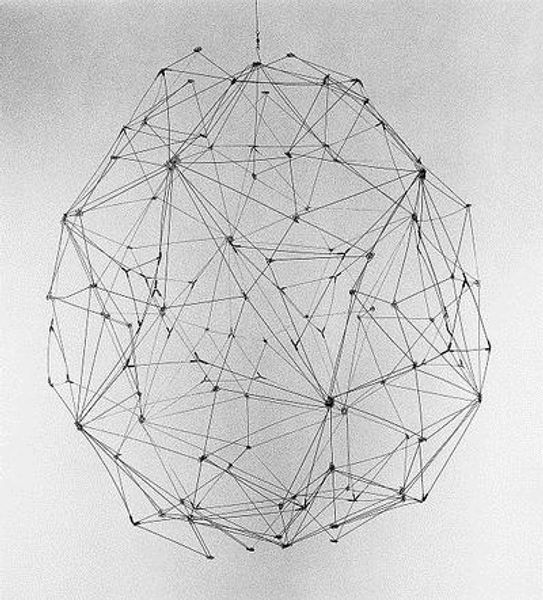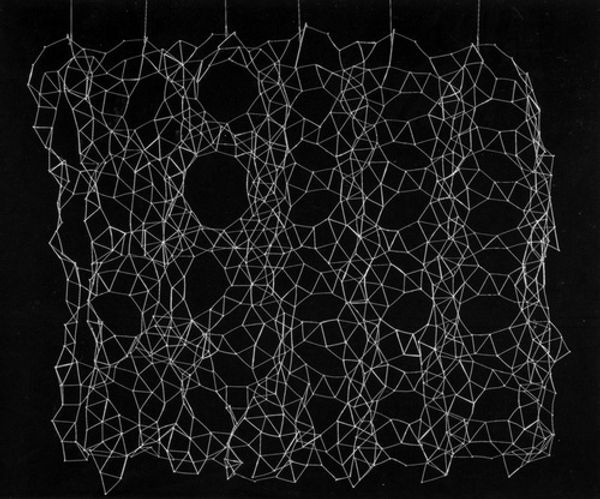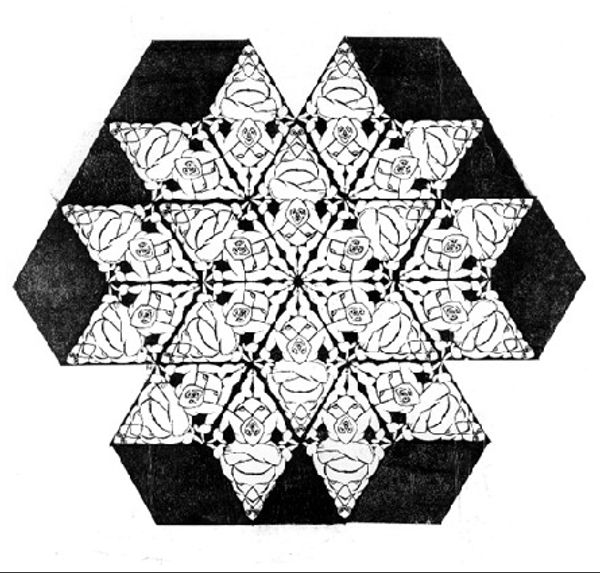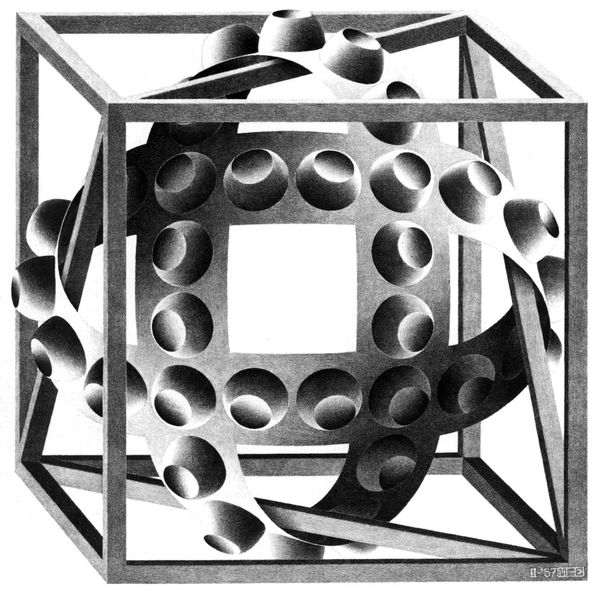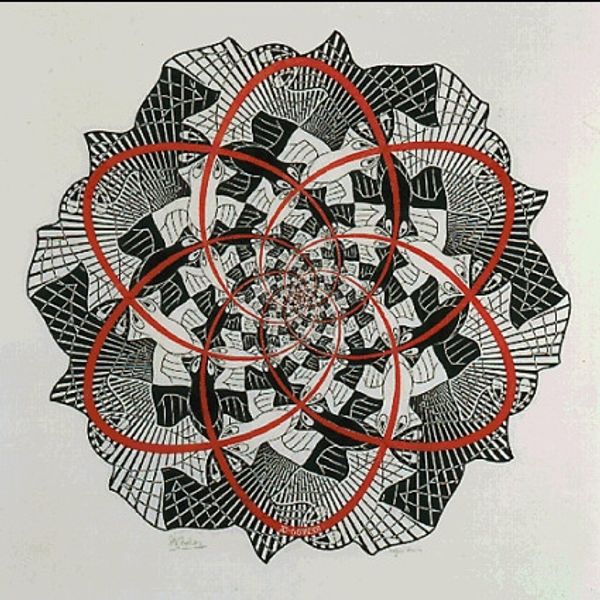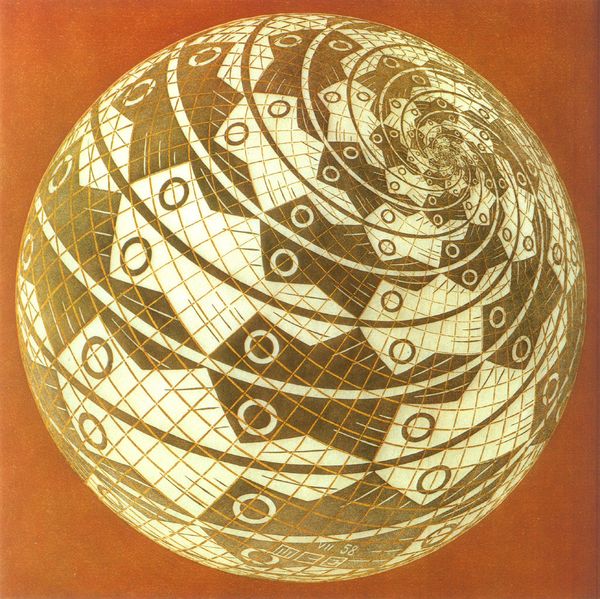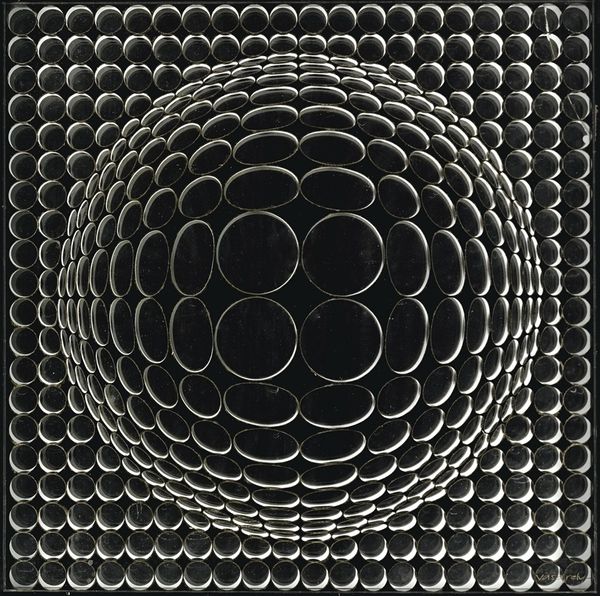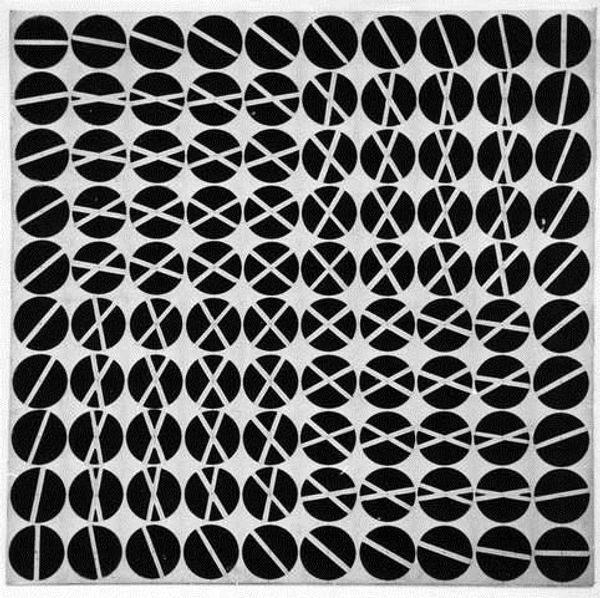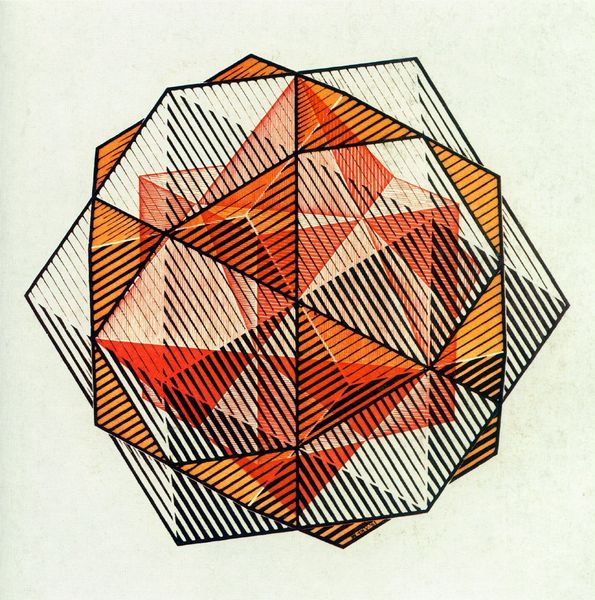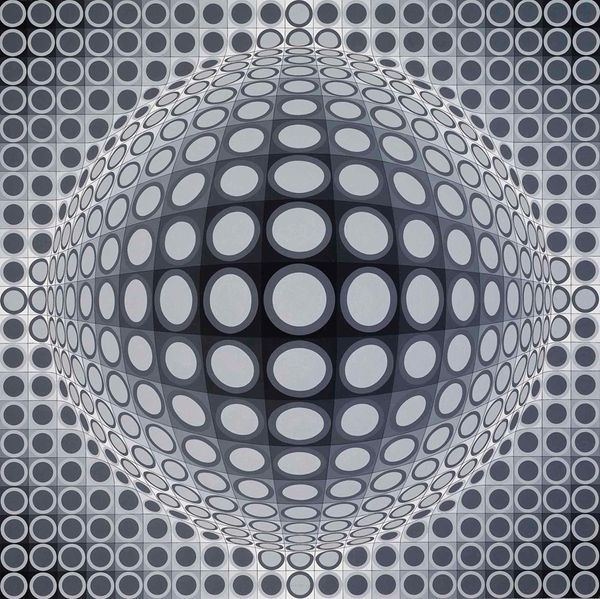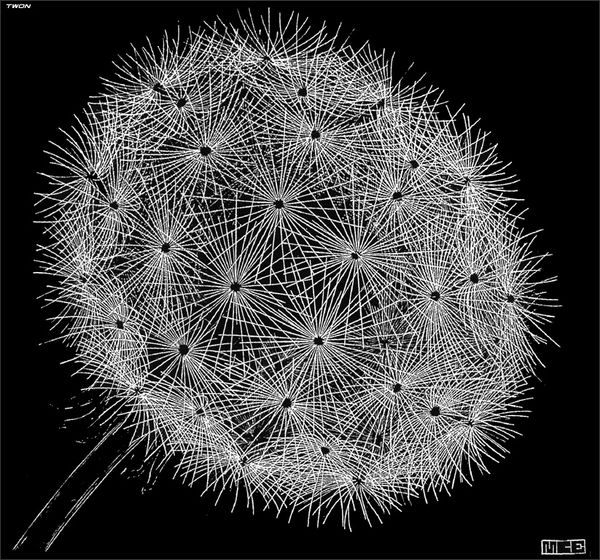
drawing, print, ink, graphite
#
drawing
#
repetition of black
#
rippled sketch texture
# print
#
tactile
#
textured surface
#
detailed texture
#
ink
#
dark black outline
#
geometric
#
repetition of black colour
#
abstraction
#
black colour rhythm
#
intricate pattern
#
graphite
#
scratchy texture
#
modernism
Copyright: M.C. Escher,Fair Use
Editor: This is M.C. Escher's "Concentric Rinds," created in 1953, an ink and graphite print. The complexity is mesmerizing, almost dizzying. What symbolic weight does this seemingly infinite orb carry? Curator: Indeed. The sphere itself is a potent symbol, isn't it? Representing wholeness, the universe, the self… But Escher fractures that totality. Do you notice how the rinds, or bands, segment the sphere? Editor: Yes, they remind me of longitude and latitude lines on a globe, but more chaotic. Curator: Exactly! Consider the psychological impact of that broken wholeness. The ordered lines promise a map, a system, yet the internal structure feels like an impossible object, resisting clear interpretation. How does this tension resonate with you? Does it trigger a feeling or association? Editor: It feels like a quest to understand something inherently unknowable, the internal structure feels so detailed and complete, like you could dive in, yet so confusing to even look at. Like life, in a way? Curator: An astute observation. The work touches on something deeply human, this desire for understanding weighed against the vast unknown. The tension makes the art really engaging. Editor: I see it now. Thanks for pointing out how Escher uses familiar symbols to evoke this sense of cognitive dissonance, leaving you perpetually trying to decode it. Curator: Absolutely, that push and pull of comprehension is key to Escher's work. The beauty resides in its unresolvable nature.
Comments
No comments
Be the first to comment and join the conversation on the ultimate creative platform.
